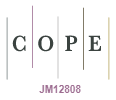Repurposing fields for CO2 storage: well integrity risk assessment across the lifecycle
Mark Davis A * and Hugo Costeno BA
B

Mark Davis is a Drilling Engineer with 13 years of experience with SLB based in Perth since completing a Bachelor of Petroleum Engineering (Hons) and Commerce from UWA in 2012. Specialising in well control and well integrity, Mark applies the latest technologies to solve complex problems from drilling to plug and abandonment in addition to carbon capture and storage projects. |

Hugo Costeno is a Senior Well Engineer with 17 years of experience on well engineering and project management across several geographies. He is currently a carbon capture, utilisation and sequestration (CCUS) subject matter expert (SME) with SLB New Energy, leading the wells domain for CCUS initiatives. He coordinates, and works, with multidisciplinary teams and several business units to provide fit for purpose solutions to CCUS projects. |
Abstract
Repurposing existing fields for CO2 storage presents an appealing alternative to drilling new wells, offering potential project cost reductions and acceleration of timelines. Several driving factors, including timing, cost, regulatory considerations, risk reduction, and enhancing health, safety, and environmental outcomes, influence developers’ interest in well repurposing. Assessing the feasibility of this approach requires careful examination of legacy wells in the field for ongoing well integrity and CO2 containment risk. The viability of repurposing wells as CO2 injectors relies on thorough technical analysis of well barrier qualification, materials selection, cement evaluation, and monitoring requirements. This paper discusses a case study of how comprehensive technical assessment, enhanced by a data science approach to improve efficiency of processing many historical well records and automatic generation of well barrier schematics, standardised qualitative and quantitative risk assessments, enabling prevention and mitigation strategies where repurposing emerged as a viable option for CO2 storage projects. This process covers all legacy wells (abandoned, suspended, and potential injectors) for their carbon capture, utilisation, and storage (CCUS) specific well integrity failure modes and consequences. Recommendations for ongoing temporary or permanent abandonment are provided to reduce risk to as low as reasonably practicable (ALARP). Repurposing existing wells as CO2 injectors is risk assessed based on potential failure modes from corrosion, elastomer compatibility, cement quality, tubing and packer stresses to inform design and monitoring decisions.
Keywords: carbon capture, CO2, injector wells, legacy wells, plug and abandonment, repurposing wells, risk assessment, well integrity.
 Mark Davis is a Drilling Engineer with 13 years of experience with SLB based in Perth since completing a Bachelor of Petroleum Engineering (Hons) and Commerce from UWA in 2012. Specialising in well control and well integrity, Mark applies the latest technologies to solve complex problems from drilling to plug and abandonment in addition to carbon capture and storage projects. |
 Hugo Costeno is a Senior Well Engineer with 17 years of experience on well engineering and project management across several geographies. He is currently a carbon capture, utilisation and sequestration (CCUS) subject matter expert (SME) with SLB New Energy, leading the wells domain for CCUS initiatives. He coordinates, and works, with multidisciplinary teams and several business units to provide fit for purpose solutions to CCUS projects. |
References
Barlet-Gouédard V, Rimmelé G, Goffé B, Porcherie O (2006) Mitigation Strategies for the Risk of CO Migration Through Wellbores. Paper presented at the IADC/SPE Drilling Conference, Miami, Florida, USA, February 2006. Paper no. SPE-98924-MS. 10.2118/98924-MS
Marya M (2023) An Evaluation of Well Completion Materials for Impure Carbon Dioxide Supercritical Streams in Hydrocarbon Production and Carbon Sequestration. Paper presented at the Association for Materials Protection and Performance (AMPP) 18th Middle East Corrosion Conference & Exhibition, Manama, Kingdom of Bahrain, November 2023. Paper no. AMPP-MECC-2023-20034.
OEUK (2022) Well Decommissioning for CO2 storage guidelines Issue 1: November 2022. Available at https://oeuk.org.uk/product/oeuk-well-decommissioning-for-co2-storage-guidelines/
Vasper M, Fagereng I (2022) Temperature Specifications for CCUS Completions Equipment: Steady-State and Transient Thermal Simulations. Paper presented at the Europe Energy Conference 83rd EAGE Annual Conference & Exhibition, Madrid, Spain, 6–9 June 2022. Paper no. SPE-209637-MS. 10.2118/209637-MS
Yun J, Zolfaghari A, Marya M (2024) Evaluation of elastomer suitability for CCUS: chemical compatibility and rapid gas decompression in supercritical CO2. Journal of Applied Polymer Science 141, e55634.
| Crossref | Google Scholar |


